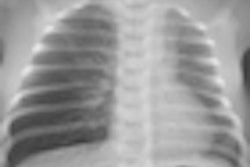Four-year results of a clinical trial evaluating the effectiveness of a five-day high-dose-rate brachytherapy treatment for endometrial cancer are proving comparable to more protracted courses of treatment, according to an article published online on 20 June in Brachytherapy. The short treatment duration is advantageous for patients who do not live near cancer centers.
Researchers at the University Clinic of Navarre in Pamplona, Spain, treated 122 patients with stage IaG3 to stage IIIaG2 endometrial adenocarcinoma. The women ranged in age from 31 to 86 years, with a median age of 63. More than 65% were older than 60. The majority (92%) had stage I cancer, but 20% and 9% of the group were categorized as being in the high intermediate risk and the high risk categories, respectively.
After having a total abdominal hysterectomy and bilateral salpingo-oophorectomy, they underwent intravaginal brachytherapy treatment 46 to 52 days following surgery. None of the patients received chemotherapy or hormonal therapy. A total of 25 Gy radiation dose was administered in five consecutive daily fractions. A dose of 5 Gy was prescribed at a depth of 0.5 cm in the upper third of the lateral wall of the vagina and at 0.3 cm in the middle third. The lower third of the vagina was not treated.
The patients had follow-up visits every 90 days for the first two years, twice yearly for the next three years, and annually thereafter. Ten patients experienced grades 1 and 2 vaginal toxicities, and one patient experienced a grade 3 vaginal cuff dehiscence.
Eleven patients, or 9% of the total cohort, had cancer recurrences. Four patients experienced locoregional recurrences. One patient had both locoregional and distant failure, and six patients developed distant metastatses. The most significant risk factors predictive of cancer recurrence included grade 3 histology and high intermediate risk categorization, followed by deep myometrial invasion and being more than 60 years of age, according to lead author Dr. Miren Gaztañaga of the University Clinic of Navarre's department of oncology, and colleagues.
These study results were reported at a median follow-up period of 4.1 years, but patients were followed for as few as seven months and as long as 8.5 years. The five-year disease-free survival rate was 95.6% for low and low-intermediate risk patients and 72.8% for high and high-intermediate risk patients. These outcomes were comparable to those of other published clinical trials delivering intravaginal brachytherapy in an eight-day to four-week long time frame. The period under investigation was between February 2001 and May 2008.
Noting that three of the four patients in the clinical trial who developed pelvic failure had been surgically staged, the authors stated it was imperative to identify predictive markers that could aid in the decision-making process before recommending intravaginal high-dose brachytherapy treatment to a patient.



















